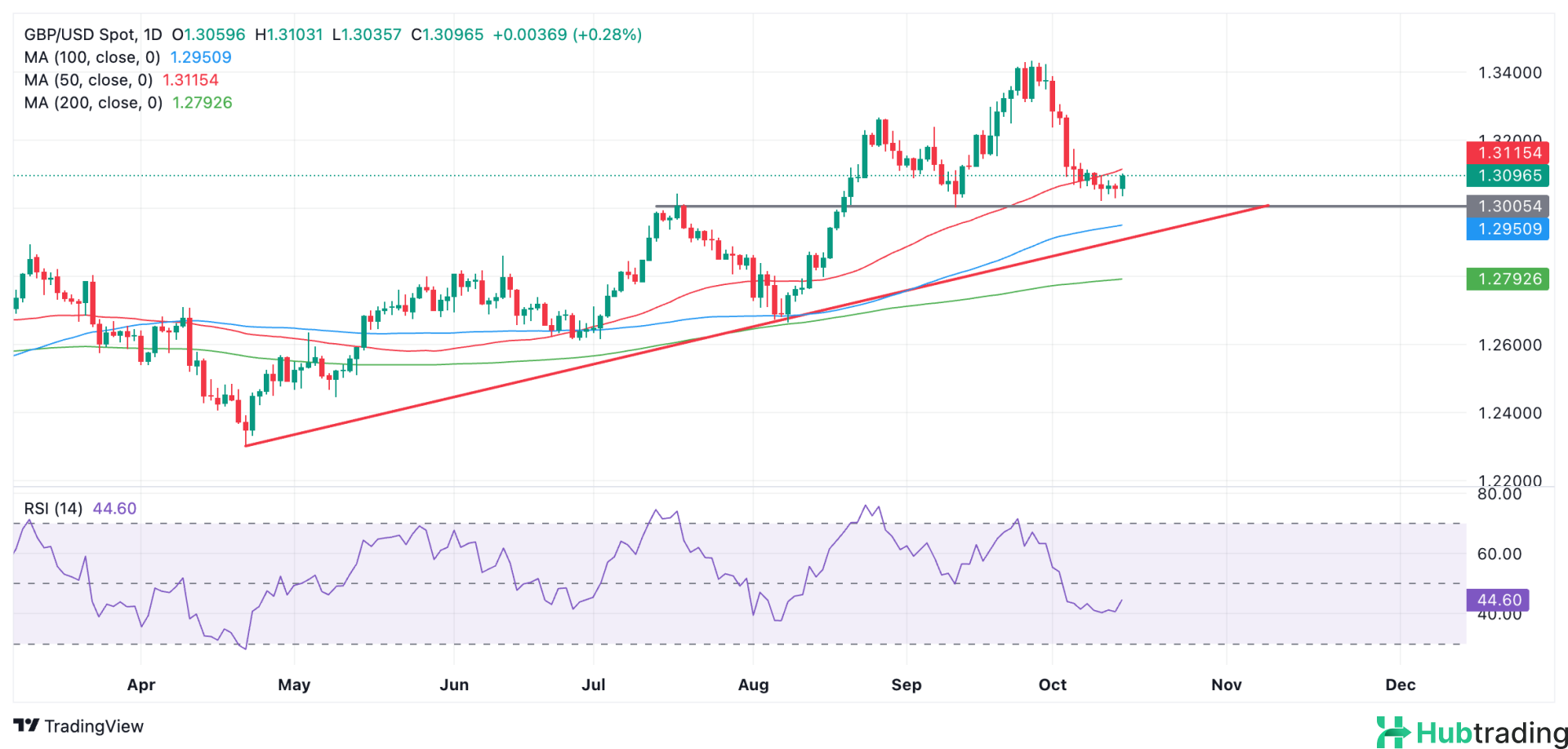- GBP/USD climbs into the 1.3100s as strong UK labor market data boosts the Pound.
- The pair recovers earlier losses from a firmer US Dollar as markets reduce expectations of aggressive interest rate cuts.
- GBP/USD hits a key technical support zone.
On Tuesday, GBP/USD recovered into the 1.3080s after robust UK labor market data lifted the British Pound (GBP). Earlier, the pair had weakened due to ongoing USD strength, as reduced expectations of steep US Federal Reserve rate cuts supported the Dollar.
The US economy has performed better than anticipated, shifting market sentiment from fears of a recession to speculation of a “no-landing” scenario. This has reduced the need for significant interest rate cuts, attracting foreign capital and boosting demand for USD.
GBP/USD is climbing after positive UK jobs data, lowering the likelihood that the Bank of England (BoE) will cut interest rates in November.
The UK unemployment rate fell to 4.0% for the three months ending in August, down from 4.1%, and beat expectations. Employment Change rose by 373K, up from 265K, while average earnings met expectations. However, the September Claimant Count, which increased to 27.9K from 23.7K, exceeded the forecast of 20.2K.
Key Market Drivers
- Tuesday’s major market events for GBP/USD are likely to be speeches from three Fed officials: San Francisco Fed President Mary Daly, Fed Governor Adriana Kugler, and Atlanta Fed President Raphael Bostic.
- Data from the NY Empire State Manufacturing Index is expected, though its impact on the USD may be limited.
- Wednesday brings significant UK data releases, including the Consumer Price Index (CPI) and Producer Price Index (PPI), which could influence the Pound.
- The BoE has hinted at possible rate cuts during its November 7 meeting, making inflation data crucial.
Technical Analysis: GBP/USD at Key Support
GBP/USD has hit the bottom of its recent downtrend after steadily declining since its late September highs in the 1.3400s. The Pound has depreciated by four cents, bringing it back to the 1.3000s.

Firm support is seen around the 1.3005 level, indicated by previous peaks and troughs. The pair could either bounce and recover or break below this level, leading to further decline. While the short-term trend remains bearish, the medium- and long-term trends are still bullish. A close below 1.3000 would be necessary to signal a continuation of the current downtrend. Additional support from a trendline at 1.2950 could disrupt the bearish momentum, but a break below that would open the door to further weakness.
The Relative Strength Index (RSI) is low but not yet in oversold territory, suggesting that more downside is possible from a momentum standpoint. No bullish reversal candlestick patterns have formed, so it’s too early to confirm a recovery. However, given the medium- and long-term bullish trends, broader upcycles could still develop.





